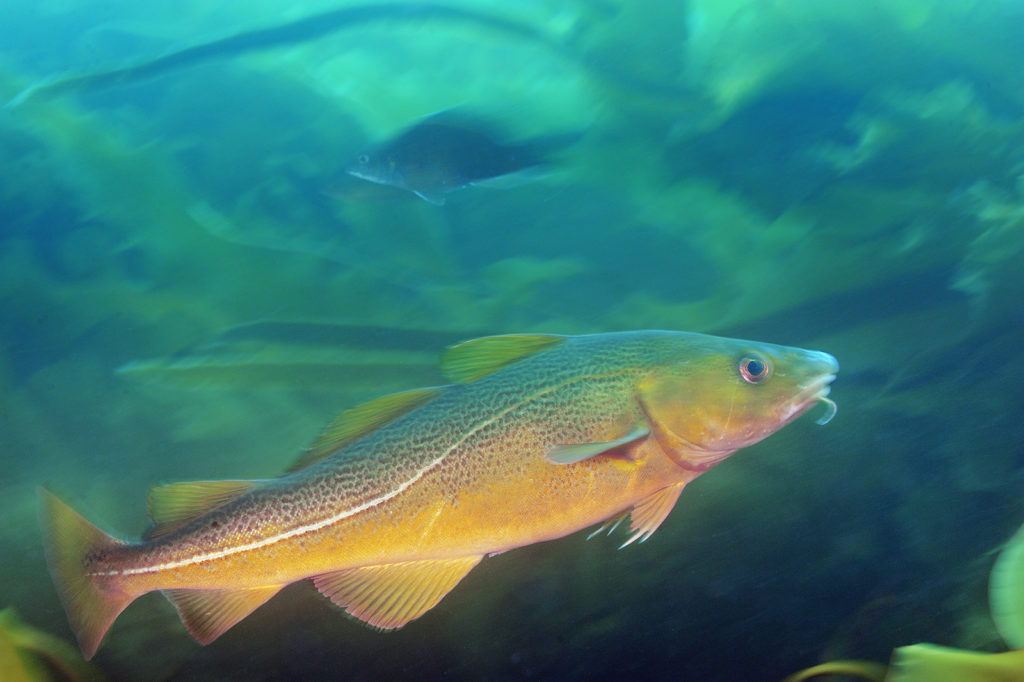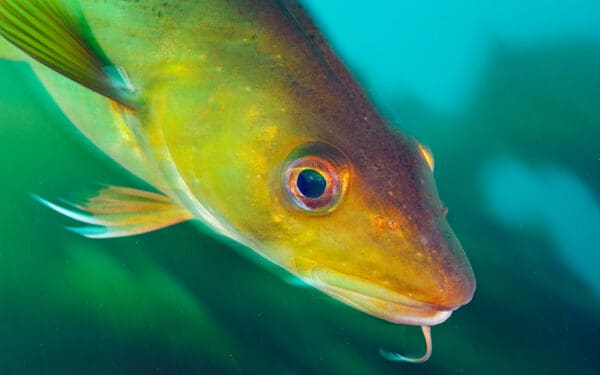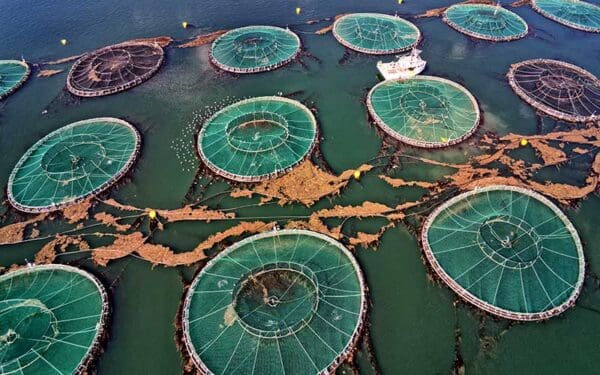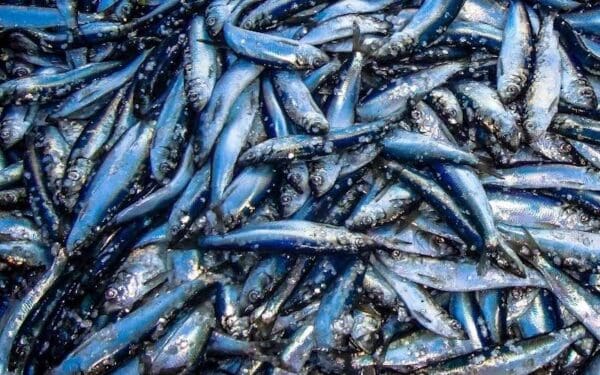
The Omnibus Habitat Amendment 2 should have prioritized the long-term health of New England’s fish, including red cod. Instead, fishery managers put fragile habitats and overfished species at even greater risk than they are today. Photo: Brian Skerry
After 14 years of development, a newly approved plan for managing New England’s fisheries should have prioritized protection of important ocean habitats and improved the long-term well-being of our fishing economy. Instead, in a short-sighted decision, fishery managers put fragile habitats and overfished species at even greater risk than they are today.
A Plan 14 years in the Making
The plan in question is the Omnibus Habitat Amendment 2 (OHA2), and it was aimed at enhancing protections for areas where fish – especially juvenile and spawning groundfish like Atlantic cod – spawn, breed, feed, and grow to maturity. These areas are referred to in federal fisheries law as “essential fish habitats.” In developing OHA2, the New England Fishery Management Council’s directive was that the protections proposed should minimize the harm of fishing gears on those habitats if it was practicable to do so.
To achieve these goals, the Council, a body dominated and influenced by industrial fishing interests, analyzed various alternatives to determine which areas of our region’s ocean should be opened or closed to commercial fishing gears that can harm these habitats.
After more than a decade of studying New England waters to create OHA2, and in the face of more than 25 years of management failure to rebuild and sustain critical fishing populations like Atlantic cod, the Council should have recommended increased habitat protections in more regions of New England’s ocean. Instead, the Council proposed sweeping changes and, with virtually no justification or rationalization, opened historically closed areas that have helped overfished species recover.
In an unsurprising but disappointing move, the National Marine Fisheries Service (NOAA Fisheries), recently approved all but a few of the recommendations proposed by the Council.
Fragile Habitats in Danger
One of the worst recommendations in the OHA2 affects the Cashes Ledge area in the Gulf of Maine. CLF and hundreds of marine scientists have been longtime proponents of permanent protection for this unique marine ecosystem, which has been called “the Yellowstone of the North Atlantic.” It serves as a refuge for many sea creatures, from vibrant communities of sea stars and sponges, to basking sharks and large whales, to commercially important fish like cod and halibut.
Cashes Ledge and its surrounding waters were closed year-round in 2002 to large bottom trawls and other bottom-tending fishing gears capable of catching groundfish. Designed and supported by numerous fishermen at the time, this closure was a recognition of the area’s biological importance and vulnerability. Thanks to more than 15 years of relatively undisturbed recovery, Cashes Ledge is now more productive than surrounding areas for many fish, including Atlantic cod.
In OHA2, the Council chose – and NOAA Fisheries accepted – to ignore the habitat importance of the Cashes Ledge area and reclassified a large portion of the current closed area as a “mortality closure.” This management status means it is no longer being protected for the overall value of its habitats, but instead can be opened to commercial fishing when the Council and NOAA Fisheries decides that groundfish populations have recovered sufficiently. If commercial trawlers are allowed back in the Cashes Ledge area, scientists know that much of the progress that has been made from the closure would be decimated.
If any place in the Gulf of Maine merits comprehensive, permanent protection from fishing impacts based on science, it is the Cashes Ledge area. Instead, OHA2 opens the door to destructive commercial fishing practices down the line that will permanently reduce long-term productivity and economic benefits across our entire region.
NOAA Fisheries also approved the Council’s proposal to reduce current protections for an area in the western Gulf of Maine by 25 percent. As with the Cashes Ledge area, this area is especially important for large, female cod of reproductive age. With the Gulf of Maine cod population only an infinitesimal fraction of what it should be, cutting protections here makes no sense. The Council’s own analysis concluded that maintaining the current level of protection would yield the greatest benefits – both for the economy and to the ecology of the area – over the long-term. Instead, commercial fishing boats will now be able catch the cod that would create future generations – putting the species at even greater risk than it is today.
Small Wins Overshadowed by Bigger Losses
A handful of small but important habitat protection improvements are tucked into OHA2 and NOAA Fisheries fortunately did not accept every Council recommendation wholesale.
In a repudiation of one of the Council’s recommendations to weaken current habitat protections on Georges Bank, NOAA Fisheries rejected a proposal that would have allowed scallop dredging and other mobile gears in the eastern portion of Georges Bank. Such a move would have would have threatened the overfished Atlantic cod that live in the area and the habitats they depend on. This part of Georges Bank has already been off limits to fishing for more than 20 years and continued protection is clearly the best choice both ecologically and economically.
NOAA fisheries also approved a Council recommendation for improved protections for some of the most important essential fish habitats in offshore areas east and south of Cape Cod and Nantucket. OHA2 now protects areas that are currently open to commercial dragging while opening up some currently closed grounds to the south of Nantucket for scalloping.
In addition, in Downeast Maine, a new habitat management area was created, banning bottom trawling to protect the seafloor and various fish species that live there. Although the available science indicated a larger area should have been protected, some protection is arguably better than none. However, this is a small step in an area where no one is currently fishing. It is also dramatically overshadowed by the Council’s other decisions to reduce essential fish habitat protections in other parts of the Gulf of Maine.
New England Deserves Better
The law requires NOAA Fisheries to identify important fish habitats and minimize the impacts of harmful fishing gears, if doing so is practicable. Approval of OHA2, however, highlights that here in the birthplace of U.S. commercial fishing, the New England Fishery Management Council and NOAA Fisheries continue to discount sound scientific advice and precautionary management. Once again, they have favored short-term economic gains over increased long-term benefits for New England’s fisheries, our ocean habitats, and the fishing communities that depend on them. It’s certainly not much to show after a 14-year investment of time, expertise, and money. New England deserved – and needed – better.




